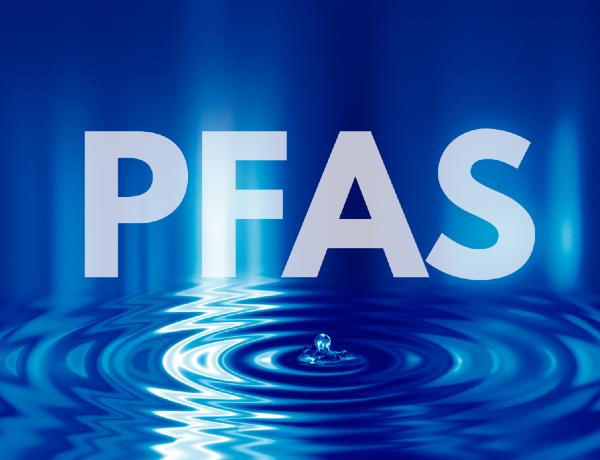
PFAS are a class of chemicals, specifically per- and polyfluoroalkyl substances, which have been utilized in a range of industrial and consumer products since the 1950's. These chemicals can be present in items such as non-stick cookware, food packaging, stain-resistant fabrics, and firefighting foam. PFAS are concerning because they are persistent in the environment and can accumulate in the human body over time, potentially causing health problems such as cancer, thyroid disease, and developmental issues. Many countries, including the United States, have taken steps to regulate and reduce the use of PFAS in recent years.
PFAS Explained
The EPA is dedicated to providing the American public with comprehensible and useful information on PFAS. The information presented is meant to provide necessary background information for comprehending the specific actions taken by EPA regarding PFAS and related emerging events. The following topics are covered:
PFAS (Per- and polyfluoroalkyl substances) are a group of man-made chemicals that are widely used for their water and stain-resistant properties. There are several types of PFAS, including:
1. Perfluorinated compounds (PFCs): These are fully fluorinated chemicals and include perfluorooctane sulfonate (PFOS) and perfluorooctanoic acid (PFOA), which are the most well-known and studied PFAS.
2. Perfluorinated sulfonates (PFASs): These chemicals have a sulfonate group attached to the carbon chain and include perfluorobutane sulfonate (PFBS) and perfluorohexane sulfonate (PFHxS).
3. Perfluorinated carboxylic acids (PFCAs): These chemicals have a carboxylic acid group attached to the carbon chain and include perfluorononanoic acid (PFNA) and perfluorodecanoic acid (PFDA).
4. Polyfluoroalkyl phosphoric acid esters (PAPs): These chemicals are used as surfactants in the production of fluoropolymers and include perfluorooctyl phosphonic acid (PFOPA) and perfluorooctyl phosphinic acid (PFOiA).
5. Fluorotelomer-based chemicals: These chemicals are used as precursors in the production of fluoropolymers and include perfluorohexanoic acid (PFHxA) and perfluorobutanoic acid (PFBA).
6. Emerging PFAS: These are newly identified or under-studied PFAS that include compounds like GenX and PFBSA.
Each type of PFAS has its own unique properties and potential health effects. It is important to stay informed about these chemicals and their impacts on human health and the environment.
The EPA has provided information regarding PFAS.
PFAS are chemicals that are commonly used and have a long-lasting nature. The components of these chemicals degrade very slowly over time.
PFAS are commonly used and can be found in human and animal blood globally, as well as in various food products and the environment due to their persistence.
PFAS have been detected from PFAS monitoring in various locations throughout the nation and around the world, including water, air, fish, and soil.
Research has indicated that certain PFAS found in the surroundings can negatively impact the health of both humans and animals.
PFAS chemicals are widely used in a multitude of consumer, commercial, and industrial products, with a substantial number of them containing this chemical compound. The difficulty in studying and evaluating potential risks to human health and the environment is a challenge.
PFAS are a group of chemicals that have been in use in consumer products since the 1950s and are found globally. They have been associated with various health effects. Exposure to PFAS is associated with adverse effects on growth, development, immune system, hormone levels and reproductive issues in animals. In humans, studies suggest an association between exposure of PFAS and certain types of cancer, fertility effects and endocrine disruption, among other diseases.
The presence of PFAS compounds in public water systems is a major source of human exposure. These compounds are resistant to degradation by biological processes due to their chemical structure and persist for long periods in the environment. This means that when released into the environment these compounds travel farther than most chemicals and accumulate in soil, rivers and lakes depleting aquatic life as well as posing a hazard for human health if not cleaned up properly. Being such a ubiquitous contaminant raises serious ethical questions related to justice from an environmental perspective; thus it is critical that governments do more to protect vulnerable communities from contamination by ensuring appropriate regulation concerning industrial discharges into waters systems as well as stricter oversight on disposal sites which can produce migration of contaminants via runoff or infiltration into underlying
PFAS (per- and polyfluoroalkyl substances) are dangerous for several reasons. Firstly, they are extremely persistent in the environment and do not break down easily, meaning they can accumulate in humans and animals over time. Secondly, they have been linked to a range of health problems, including cancer, liver damage, and developmental issues. Additionally, they can interfere with the immune system and hormone production. PFAS are often found in everyday products such as non-stick cookware, water-resistant textiles, and food packaging, making exposure to these chemicals difficult to avoid. It is important to take steps to reduce exposure to PFAS, such as avoiding products containing these substances and supporting efforts to regulate and phase out their use.
PFAS (per- and polyfluoroalkyl substances) are dangerous because they are persistent and bioaccumulative, meaning they don't break down easily and can build up in living organisms over time. PFAS have been linked to a variety of health problems, including cancer, immune system dysfunction, and developmental issues. Additionally, PFAS have been found to be widespread in the environment, including in drinking water sources, which means that many people are exposed to these chemicals on a regular basis. It's important to take steps to reduce exposure to PFAS whenever possible, and to advocate for stricter regulations on the use of these chemicals in industry and consumer products.
PFAs, also known as Per- and polyfluoroalkyl substances, are man-made substances utilized in various consumer products, industrial procedures, and fire suppression foams. They have a persistent existence in the environment and can accumulate in the human body. Studies suggest they can have adverse effects on human health, including an increased risk of cancer such as kidney, testicular, and thyroid cancers. Exposure to PFAS may disrupt hormonal functioning in the body, potentially resulting in infertility, low birth weight, and delayed puberty.
1. Decreased fertility: PFAS have been shown to impact reproductive health, with some studies linking exposure to decreased fertility in both men and women.
2. Weakened immune system: Exposure to PFAS has been linked to a weakened immune system, making individuals more susceptible to infections and illnesses.
3. Liver damage: PFAS can accumulate in the liver and cause damage over time, leading to liver disease and dysfunction.
4. Developmental delays: Exposure to PFAS during pregnancy can cause developmental delays in children, such as delayed growth and learning disabilities.
Overall, PFAS are harmful to human health and should be avoided as much as possible. To reduce exposure, individuals can avoid products containing PFAS, filter their drinking water, and dispose of PFAS-containing products properly.
The EPA and its associates are conducting research to address important inquiries regarding PFAS, such as improving the detection and measurement of PFAS in air, water, soil, fish, and wildlife, determining the extent of human exposure to PFAS, assessing the impact of PFAS on human health and the environment, developing methods for removing PFAS from drinking water, and determining appropriate management and disposal methods for PFAS.
This treasure trove of knowledge is like a secret weapon for the EPA, state, local, and tribal partners to protect our precious human health and environment!
PFAS chemicals are commonly present in various day-to-day objects such as food containers and packaging, making it challenging to avoid them. The presence of these chemicals poses a potential risk to the safety of our food, as they have the ability to transfer into the items we consume. PFAS exposure is no longer limited to certain products, as evidenced by the use of Teflon pans and the warning to hunters about contaminated deer.
Fish consumption is limited in Minnesota and Wisconsin due to PFAS contamination, while Michigan ranchers have been affected by PFAS pollution. The presence of PFAS in sludge from decades ago has led to contamination of cattle feed and farms in Maine, resulting in their closure. It is crucial for individuals to understand the potential exposure to this chemical compound and take necessary measures to protect themselves from its detrimental effects, which seem to persist.
Research shows that a significant number of Americans, approximately 60% of the population, are affected by PFAS water contamination in their drinking water and public water systems. This contamination may be caused by various factors, including the use of firefighting foams containing PFAS, improper manufacturing techniques, and the washing of clothes treated with PFAS. Military personnel were also exposed to contaminated water on and around bases that were aware of the use of toxic firefighting foam and disposal of polluted water into nearby water sources. Currently, there are no federal drinking water standards for PFAS, and the existing regulations in some states only cover a limited number of PFAS chemicals.
PFAS are everywhere, even in the air we breathe. PFAS is introduced into the environment through various means, including emissions from manufacturing and chemical industries. Products containing PFAS, such as carpets and treated clothing, can become airborne and form small particles that can be found in the air and dust we breathe. Children may be at a higher risk of being exposed to chemicals from crawling on carpets or wearing treated clothing, which could pose a danger. The ocean has been found to contain PFAS, which can be released into the air through crashing waves. This can result in long-distance transportation and deposition onto land. Preventing PFAS from entering our environment is crucial due to their potential health risks, including cancer and fertility and development problems.
The quest for conquering PFAS is still in its infancy, but we're making strides in developing some serious tech to treat, concentrate, and obliterate this pesky pollutant. Sadly, we're still struggling to find a magic potion to banish PFAS from all forms of media without breaking the bank. Managing PFAS is a tricky business - it all depends on the specific type of media. And let's be real, removing PFAS from contaminated sources like water, soil, sludges, leachate, vegetables, milk, and beef is no easy feat. Each type of media presents its own unique challenges that can't be tackled with existing technology alone. But don't become discouraged, many forward thinking states and federal agencies are hard at work researching new methods for treating, concentrating, and destroying PFAS. And with options evolving faster than a chameleon on a rainbow, the future is looking pretty bright.
Currently, there exist multiple recognized and efficient technologies for eliminating PFAS from water. Common methods for water treatment include adsorption with media like Granular Activated Carbon or Ion Exchange, as well as Reverse Osmosis. These methods involve the adhesion of atoms, ions, or molecules from a gas, liquid, or dissolved solid to a surface. Information about each of these technologies is available at the EPA website. Typically, state water agencies install GAC systems, but in some circumstances an Ion Exchange or Reverse Osmosis system may be determined to be more economical and is utilized. The GAC method is widely considered effective in treating PFAS in drinking water, as evidenced by post-installation sampling at residences in each state. However, it is important to note that using filters to collect PFAS can result in residuals or waste materials with concentrated levels of PFAS. The residuals or waste materials require appropriate disposal or destruction.
While more research is needed to fully understand the long-term effects and health hazards of PFAS exposure, it is clear that these chemicals can have serious impacts on human health. It is important to take steps to minimize exposure to these chemicals whenever possible.











